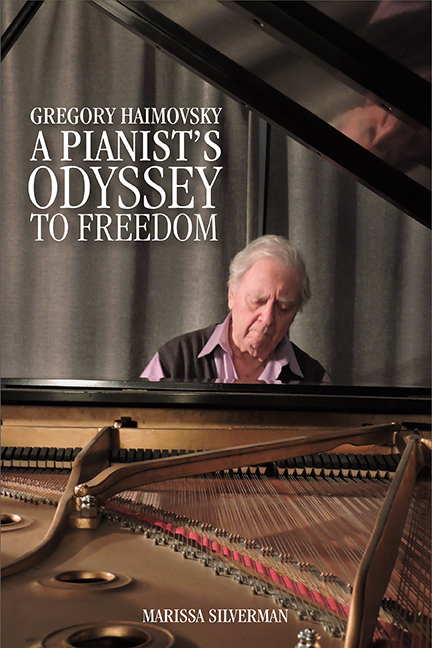Book contents
- Frontmatter
- Dedication
- Contents
- Acknowledgments
- Introduction
- 1 A Pianist Is Born
- 2 A Concert Pianist in Exile
- 3 Spirituality, Love, and Color: Understanding Messiaen’s Music
- 4 From Thaw to Frost: Neonationalism and the Messiaen Premieres in the USSR
- 5 Haimovsky and Grazhdanstvennost’
- Appendix 1 Selected Performances of the Music of Olivier Messiaen by Gregory Haimovsky, 1964–72
- Appendix 2 Selected Writing by Gregory Haimovsky on the Music of Olivier Messiaen
- Notes
- Index
3 - Spirituality, Love, and Color: Understanding Messiaen’s Music
Published online by Cambridge University Press: 04 June 2021
- Frontmatter
- Dedication
- Contents
- Acknowledgments
- Introduction
- 1 A Pianist Is Born
- 2 A Concert Pianist in Exile
- 3 Spirituality, Love, and Color: Understanding Messiaen’s Music
- 4 From Thaw to Frost: Neonationalism and the Messiaen Premieres in the USSR
- 5 Haimovsky and Grazhdanstvennost’
- Appendix 1 Selected Performances of the Music of Olivier Messiaen by Gregory Haimovsky, 1964–72
- Appendix 2 Selected Writing by Gregory Haimovsky on the Music of Olivier Messiaen
- Notes
- Index
Summary
The cult of Shostakovich isn't a myth.
—Igor StravinskyI have no wish to waste my time on harrowing subjects. I am a musician of joy.
—Olivier MessiaenWhat was it about Messiaen's scores that ignited Haimovsky's fascination and empathy with the spiritual qualities of this music? My explanation begins with Dmitri Shostakovich.
Unlike any other Russian composer, Shostakovich captured and expressed the agonies and struggles of Soviet citizen's daily lives during Stalinist oppression. His personal and artistic search for creative ways of revealing profound truths through his music made him both a hero and an enemy of many. (Recall the preface of this book, where I note that Solzhenitsyn viewed art as a powerful means of discovering and fighting for “the Truth.”)
From the end of the 1950s to the beginning of the 1970s, Shostakovich's popularity was unparalleled in Russian musical history. It reached cult proportions because the extraordinary power and expressiveness of his music persuaded many Russians that he was both a “truth-teller” and a radical who had succeeded in resisting Soviet tyranny. It was as if fate had rewarded Shostakovich for the many personal and artistic abuses he suffered during Stalin's murderous regime. His music hung “in the air.” It was everywhere: in concert halls, on the radio, and on television. He became the idol of the Russian intelligentsia. At the time, Shostakovich's oeuvre was held in higher esteem than that of any other Soviet composer, including Prokofiev. Even Stravinsky, who was living in America, far removed from Soviet struggles, felt the power of Shostakovich's influence and personality. As he said in 1961, “The cult of Shostakovich isn't a myth.”
The ways in which many of Shostakovich's compositions were able to mirror the ugliness, harshness, and tragedies of his era is comparable to the expressiveness of “Piece of Beef,” which Chaïm Soutine painted in 1923. The raw nakedness of much of his music, like the images in Soutine's work, screams out for mercy and pity. And like some of Soutine's other paintings, some of Shostakovich's works paint the world in black and white, without much commentary. As a first step toward exposing and understanding “the enemy within,” Shostakovich worked to communicate musically the ills that plagued and surrounded his fellow Soviets.
- Type
- Chapter
- Information
- Gregory HaimovskyA Pianist's Odyssey to Freedom, pp. 70 - 100Publisher: Boydell & BrewerPrint publication year: 2018



